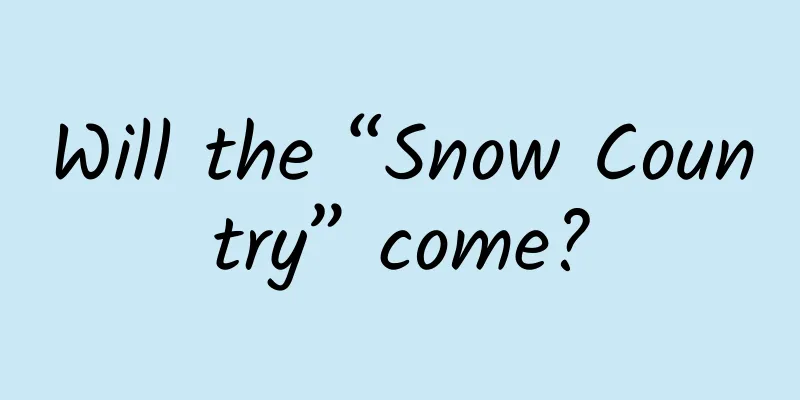Will the “Snow Country” come?

|
On March 20, 2023, the last assessment product of the Sixth Assessment Report of the Intergovernmental Panel on Climate Change (IPCC) of the United Nations, the Synthesis Report, was finally released, which was half a year late. It has been 9 years since the release of the last assessment report. During this period, is there any good news on climate change? The answer is yes. Various policies and regulations to mitigate climate change have been introduced one after another. Some countries have achieved significant reductions in greenhouse gas emissions, and the promotion of low-emission or zero-emission technologies is also progressing steadily. So, has the trend of global warming stopped? Do we still need to push for climate action? Rising global temperatures have led to more frequent and more intense extreme climate events. If this trend cannot be effectively curbed, the survival crisis of mankind will continue to escalate. Imagine that more frequent and severe high temperature, freezing and rainfall events may occur, and people in some climate-sensitive and underdeveloped areas will face exponentially increased risks in personal safety, food security and water security. If other factors such as epidemics, conflict events and changes in ecosystems are taken into consideration, the world may be just one step away from purgatory! The road ahead is long and arduous! The global surface temperature from 2011 to 2020 has risen by 1.1°C compared to 1850 to 1900, and global greenhouse gas emissions continue to increase. The reasons behind this are complex and involve the use of non-renewable energy, land use changes, and the historical and future contributions of inequality caused by consumption and production patterns at the national and individual levels. Can the Paris Agreement limit global warming to 1.5°C still be achieved? At this historic crossroads, what choice should we make? "Snowpiercer" previews a way of thinking for us. In this movie, in order to control the global temperature within a certain range once and for all, humans choose to spray a large amount of coolant CW7 into the atmosphere in 2031. Little did they know that this move opened Pandora's box, and the earth quickly froze. Everything seemed to be paused, all species were on the verge of extinction, and only a small number of people squeezed onto the "Noah's Ark" - a perpetual motion train. Strict hierarchies are implemented on the train. In order to achieve "perpetual motion" and "balance", the residents of the tail car are under endless oppression. In the end, the residents of the tail car rose up in resistance and tore apart the train's perpetual motion lie. The train finally stopped at the cost of the car being destroyed and people dying... The survivors set foot on the land they had not seen for a long time again. A polar bear gazed at them deeply from a distance. If humans repeat the same mistakes, will there be a second train? If we want to avoid the collapse of the climate system, the greenhouse gas problem is an unavoidable problem. Greenhouse gas emissions are mainly divided into two aspects: one is the accumulated emissions in the past, and the other is the emissions in the future. The current energy transformation, such as switching to various clean energy sources and advocating low-carbon life, is aimed at future emissions. So, can the greenhouse gases accumulated in the atmosphere only wait for the earth system to "digest" them on its own? At present, some studies have proposed that physical means can be used to extract carbon dioxide from the atmosphere and store it, such as using bioenergy combined with carbon capture and storage technology to achieve the effect of "negative emissions". This carbon dioxide transfer and storage technology has been commercially demonstrated in reality. However, is this approach really feasible? First of all, this approach is not feasible in all regions of the world. For example, it is obviously impossible to achieve this in a region that is still in extreme poverty. We must admit that it is unfair to ask all countries and regions in the world to bear the same climate action responsibilities. Aditi Mukherjee, one of the authors of the Comprehensive Report, pointed out: "Almost half of the world's population lives in areas that are highly vulnerable to climate change. In the past 10 years, the number of deaths caused by floods, droughts and storms in highly vulnerable areas has been 15 times that of other areas." Secondly, whether there are sustainability or potential risks in human intervention in climate change, including carbon dioxide storage technology, solar radiation management technology, etc. At present, the international management mechanism in this regard is relatively blank. Even if there is corresponding supervision, effective supervision still has a long way to go from a technical perspective. Will the end of this technology be another CW7? “This Synthesis Report highlights the urgency of more ambitious action and shows that if we act now, we can still ensure a liveable, sustainable future for everyone,” said IPCC Chair Hoesung Lee. Before the "Snow Country" arrives, mankind must unite to overcome this doomed global crisis. |
<<: Wow, the miracle medicine for curing my mouth ulcers turned out to be cockroach water!
>>: The most useless organ in the human body, would it be better to remove it?
Recommend
Sony MDR-Z7M2: Fully wrapped listening experience, making music more vast
As a benchmark brand in the global audio industry...
A brief introduction to KCP protocol
Part 01 What is KCP Protocol KCP is an open sourc...
Why is marketing so difficult nowadays?
Why has marketing become difficult? What changes ...
Switching between HStack and VStack in SwiftUI
Preface SwiftUI’s various stacks are the most bas...
What are the advantages of news app development?
In this era of information explosion, are you sti...
Don’t miss out on these creative information flow techniques that can increase your results 10 times!
With the explosion of information flow advertisin...
The "Little Yellow Car" is addicting! Why do live shopping make people spend a lot of money without realizing it?
Why does live shopping make people spend a lot of...
Crazy stories of "poaching" in the Internet circle
[[130252]] Someone once said, "In the 21st c...
4 marketing details to make your APP stand out
Since I represented "Zhimeng Mobile" to...
The secret to optimizing vocational training/academic education landing pages!
At the beginning of 2020, the impact of the epide...
Costs are reduced by 50%, here are tips for placing OCPC information flow ads!
As the end of the year draws closer, optimizers a...
How much does it cost to customize a logistics mini program in Changge?
How much does it cost to customize the Changge Lo...
Bug alert! The bugs that have been hiding for the winter are coming out!!!
Audit expert: Li Weiyang Well-known science write...
All came out overnight? Pay attention to this recently →
Overnight, Are they all out? recently, "Shan...









